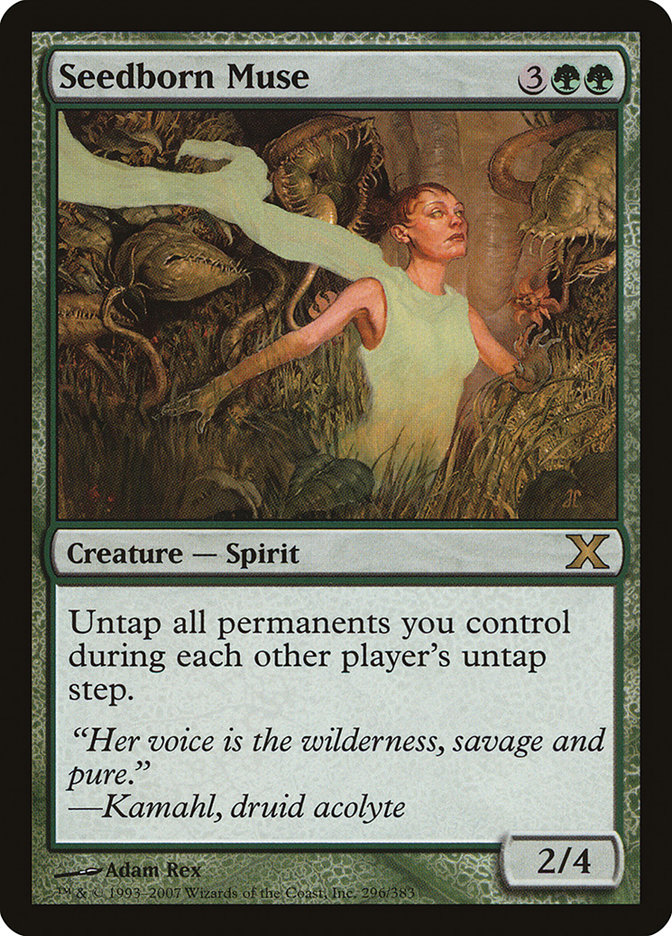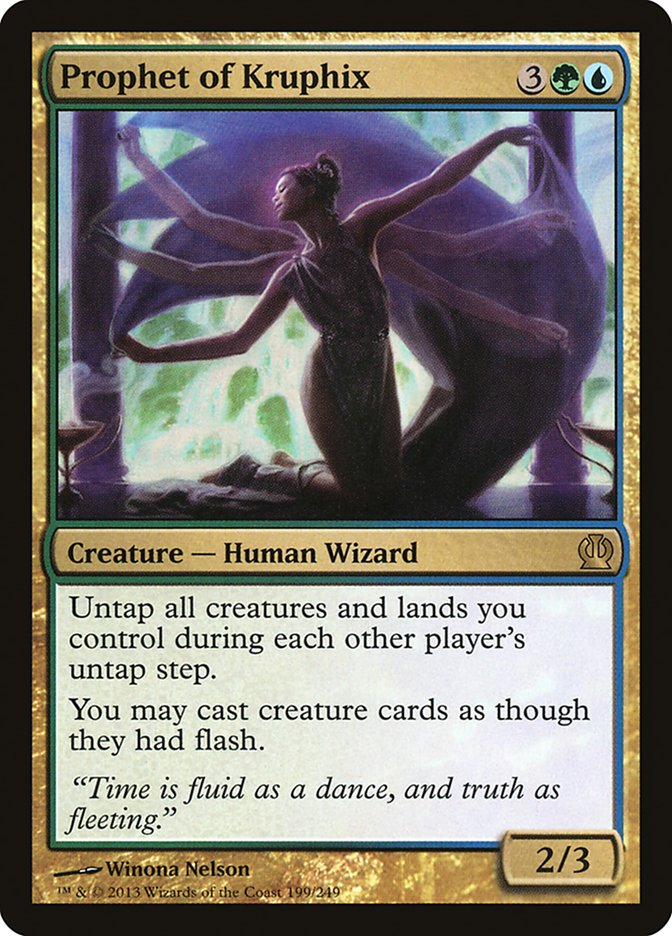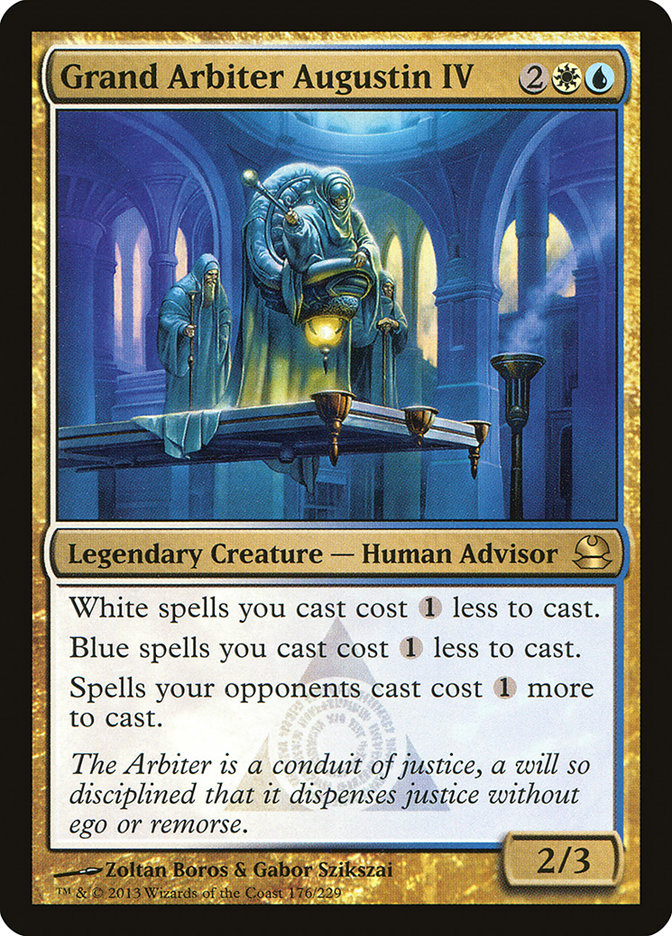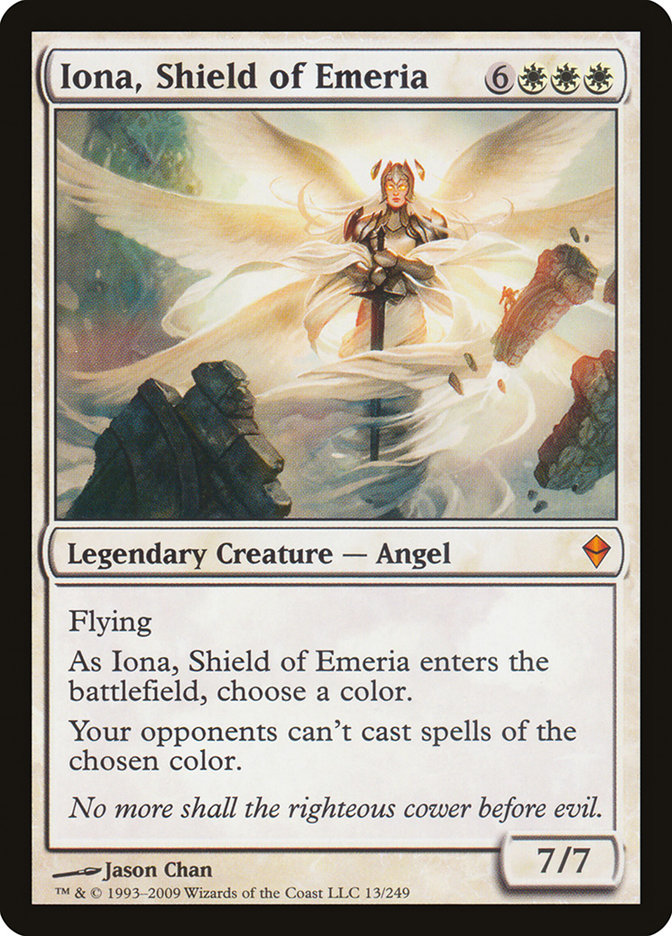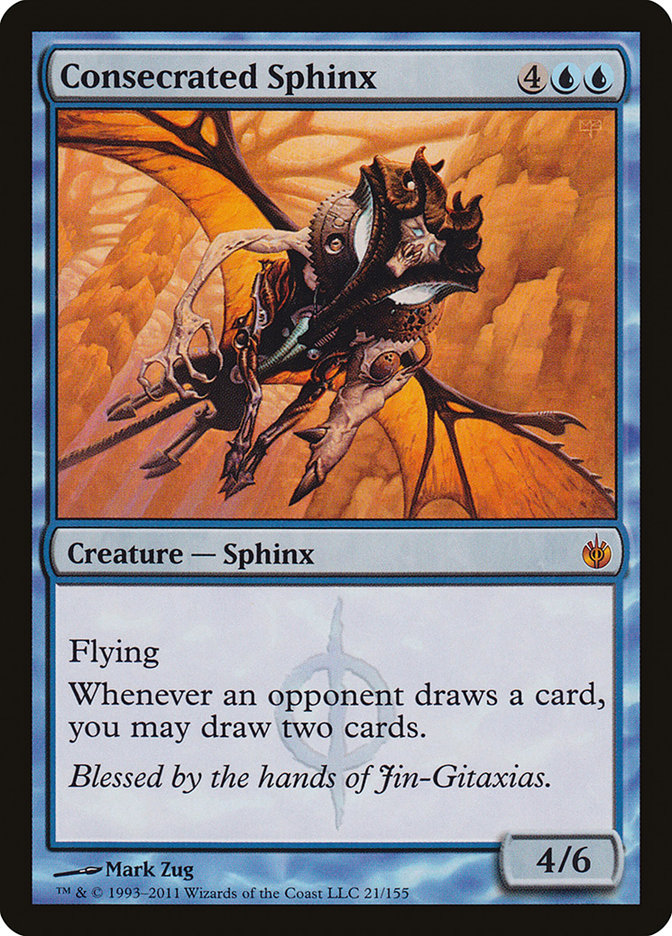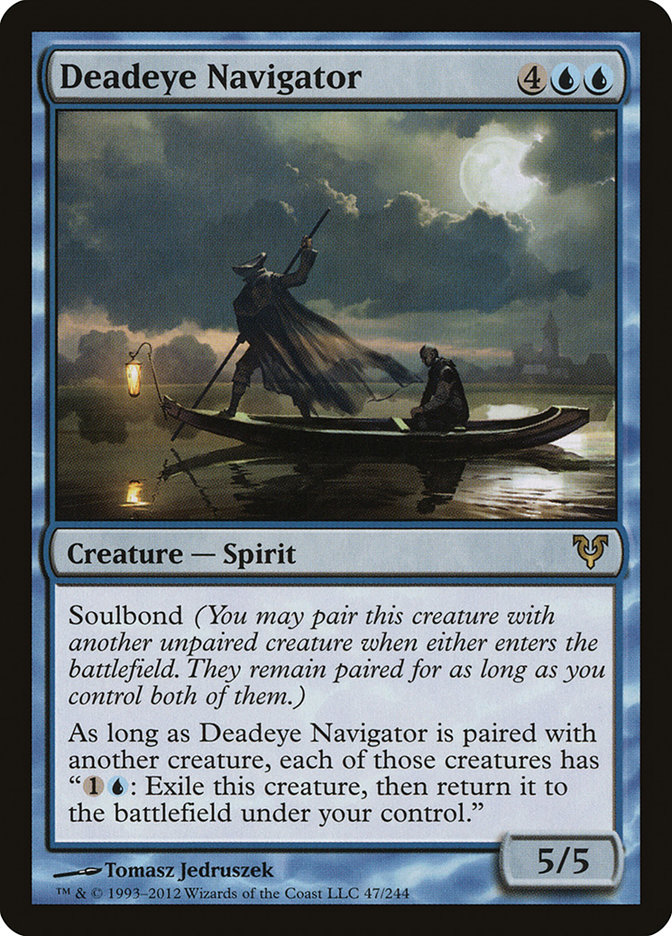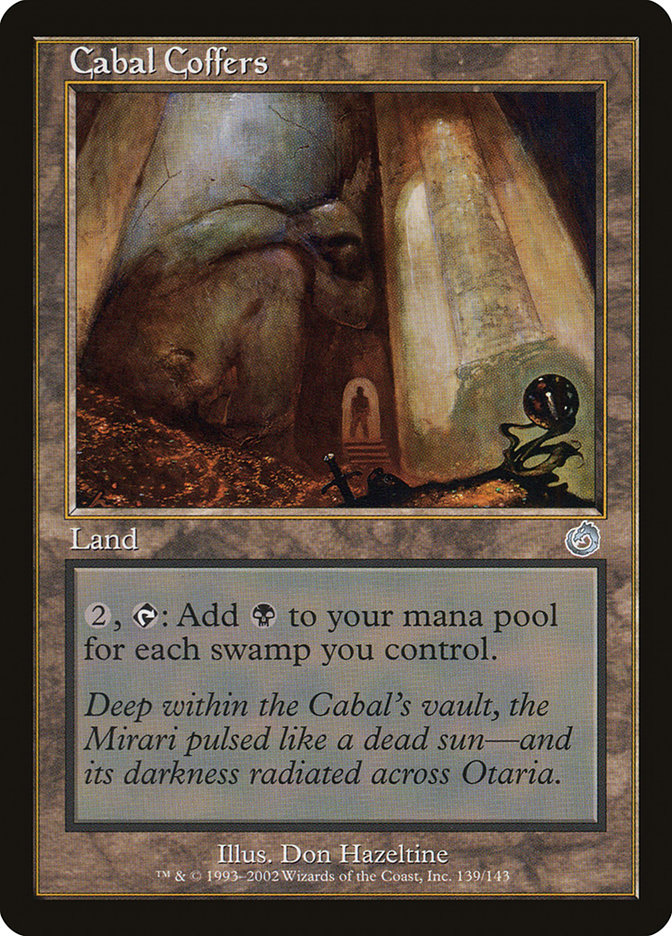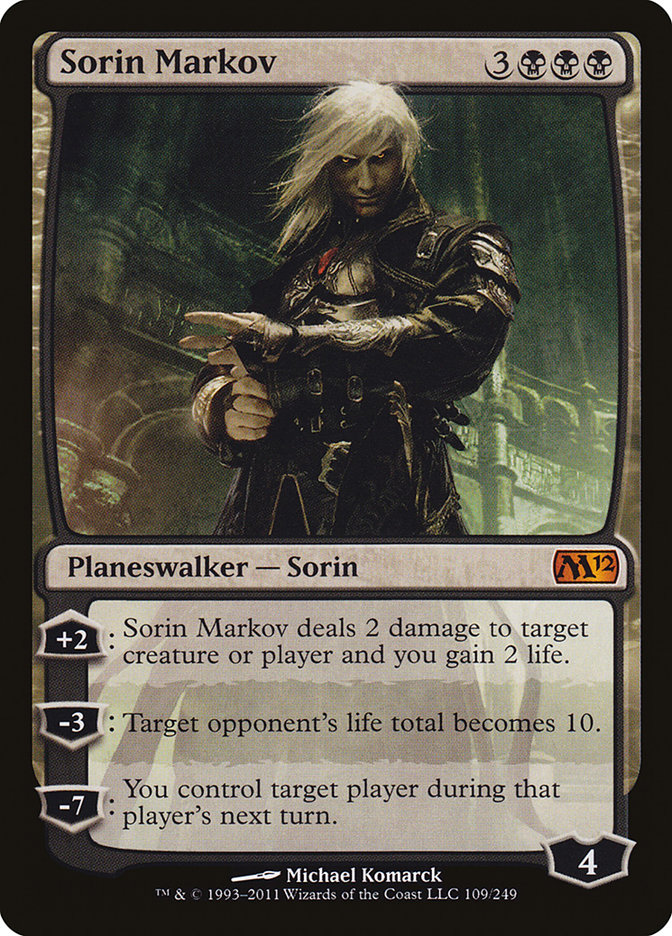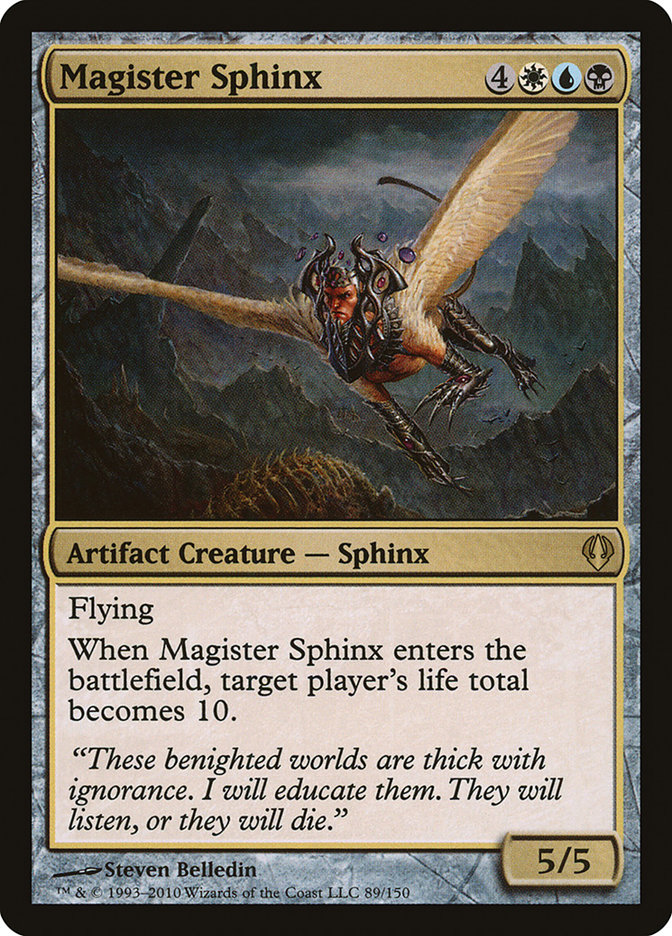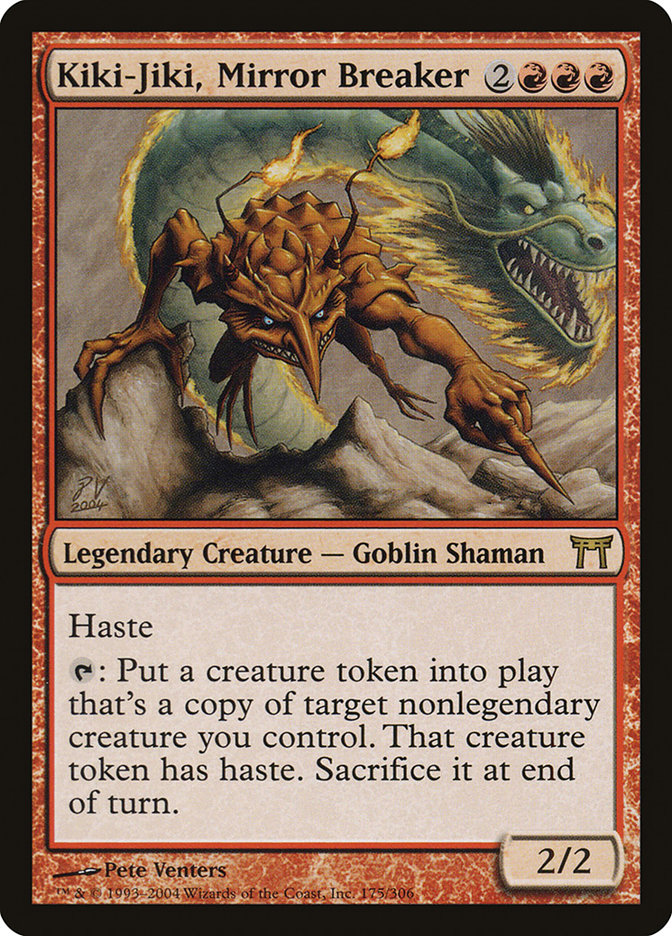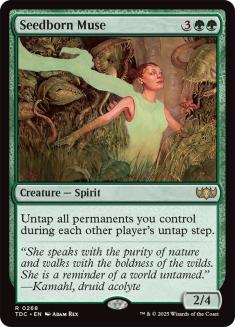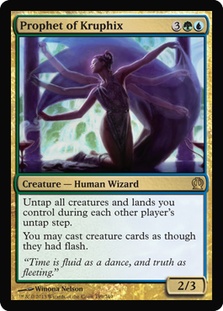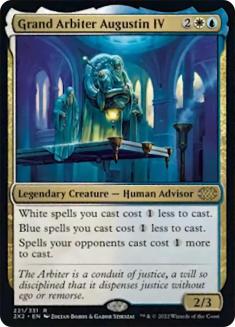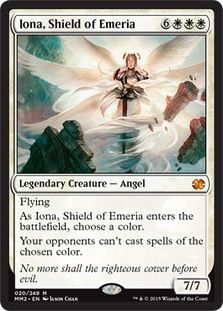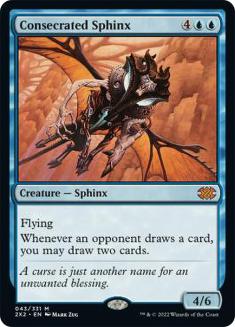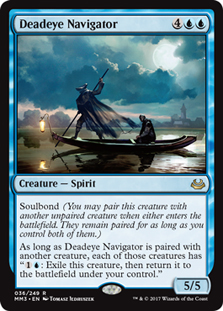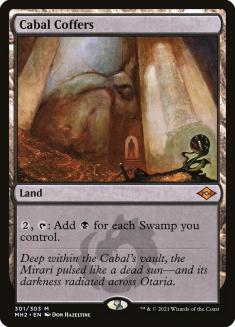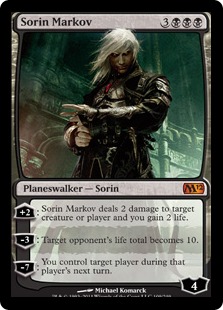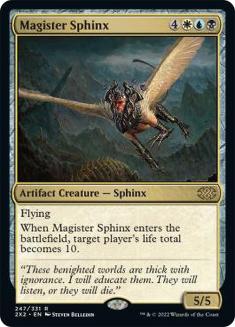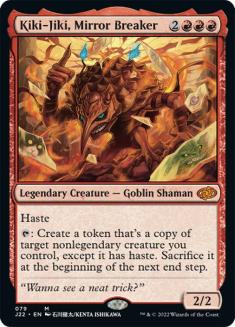It’s sometimes healthy to engage in thought experiments. They’re brain exercises, if you will. Evaluating things from different perspectives offers insight to the way you currently make decisions. In the worst case, it keeps you always looking at things with fresh eyes.
Coming out of the discussion on the banning of Sylvan Primordial (and thanks to everyone who chimed in), I explained our process to several people both online and locally. During those discussions, we came across a fair number of "if X is banned, why isn’t Y?" There are two simple answers to the question. The first is that we want to keep the banned list as short as reasonable and possible. The second is that evaluating cards individually in what they do to the format is one of the ways to make that happen.
As I said last week, "power level" is not a factor. Cards winning/ending games isn’t a factor—until they do it in such a fashion that we find unhealthy for the format. Fastbond and Metalworker are banned primarily for the same basic reason: their potential to generate too much mana too fast. But that’s not to say that Fastbond is banned because Metalworker is banned. It just so happens that they’re in the same general category of offenses.
Local player, Armada Games employee, and Monday Night Gamer Todd Palmer during the Monday session the day Sylvan Primordial was banned asked, "If you had to ban exactly ten more cards, what would they be?" We’ve had numerous discussions about the withertos and whyfors of the list, so Todd has pretty good insight into how stuff happens. I took the question for what it was, a wander into "what if?" territory.
The other members of the RC will ask me to make sure you understand (and I want to make sure you understand as well) that this is not a prelude to anything. It’s not a watch list. It’s not an evaluation of what cards might be next. It’s not some hidden subtext about cards I really want banned but the rest of the RC won’t let me. It really is a thought exercise, and it’s just me doing some head scratching. How would I evaluate cards if the list had to be a certain number?
For the purpose of this exercise, why the number exists isn’t important. We’ll accept the premise and allow ourselves to move on. We’ll have to accept that there is something external to the existing banned list philosophy since the cards aren’t already banned. We’ll have to create new criteria along the way. It’s not going to be just me listing ten cards and being done. The dialogue starter will be not simply the cards but the why. Still, the premise is that this is a forced choice of exactly ten cards (whether that force is a gun to my head or a suitcase full of cash doesn’t much matter, although I’ll remind you the RC doesn’t negotiate with terrorists).
It’s important to reiterate that "power level" isn’t a thing. "Run answers n00b" is also not a thing. I like powerful cards. I want big, swingy, and epic things happening in the format. We love to see wild stuff make the rounds. Those are what gave the format its legs in the first place and are what will continue to keep it popular. Remember the mantra that whatever happens on turn 13 is fine. The same thing happening on turn 3 is not. This will also be about cards that are currently getting played. If some obscure card is capable of annoying the fan base but no one is running it, it won’t get consideration here.
The first way to tackle this problem is to create additional categories of offense. What way do games shake out that I’d rather not see? The first one is "asymmetrical resource control" (ARC). ARC enables one player to have consistently more resources than the others at little to no cost. Boundless Realms doesn’t qualify since the cost is high. Three cards that come to mind under ARC are Seedborn Muse, Prophet of Kruphix, and Grand Arbiter Augustin IV.
There is endless debate about whether Seedborn Muse or Prophet of Kruphix is better (debate which some people attempt to resolve by saying "dude, play both"). Prophet of Kruphix only untaps creatures and lands, while Seedborn untaps everything. Prophet makes up for the difference by giving your creature cards flash. What both of these cards do is effectively create an extra turn for their controller on the turn of each other player. Instead of "one for me, three for you," it’s "one for me, one for you." Turns are powerful resources, especially when you have all your resources available.
For my money, Prophet of Kruphix is better than Seedborn because it gives creatures flash. Additionally, I tend to play mostly with creatures and lands and not a great number of artifacts (especially mana rocks), so I’m personally not losing much with Prophet. Your mileage may vary. You might ask why Lighthouse Chronologist isn’t there as well. The simple answer is that the investment to get it to where needs to be is sufficiently high to keep it from being problematic.
Grand Arbiter creates ARC in a fashion similar to an early game Sylvan Primordial. It makes its controller’s things cheaper while making everyone else’s stuff more expensive. Grand Arbiter making your stuff cheaper isn’t that big a deal. There are many reasonable cards that help you pay for your stuff. The kick in the jacobs here is while you’re speeding out your stuff you’re slowing down everyone else’s development. While this is a reasonable competitive strategy, I’d prefer to see games develop where players can do things other than watch. The combination of abilities (another similarity to Sylvan Primordial) earns GAAIV a spot on the hit parade.
A fourth card that provides a kind of asymmetrical resource control is Iona, Shield of Emeria. While I’d like to see some potential downsides for the huge value players get out of going monocolored, I’d rather that downside not be "shutting them out of the game." Iona’s potential to make someone a spectator (without killing them) puts it on the list. It also opens the door to deeper discussion of Painter’s Servant, but that’s a different essay altogether.
Symmetrical resource control, such as Armageddon and Obliterate, don’t make the list. Sure, there are things that can happen like float a bunch of mana, Obliterate, and then cast stuff, but that’s nothing more than a win condition. It doesn’t generally create a miserable game (unless the win con is Smoldering Tar, I suppose). I want to keep evaluating what cards do on their own (understanding also that nothing exists in a vacuum). Banning a card simply because of what it does with another specific card is a path to madness.
The second category I’d hit here is "fan favorites" (favorite being used in the ironic sense). The first is one that constantly gets discussed both on message boards and by the RC: Consecrated Sphinx. It can be a card that takes over a game if unanswered (although it doesn’t really do it by itself), and the problem is that the advantage you get from it costs nothing. My current thought on the card is that while we should always be talking about it it’s not over the line. That said, there’s enough hatred for the card that I’d use one of my ten picks on it.
The other card that I’d sacrifice on the altar of fan voices is Deadeye Navigator. Yes, it’s another card that can take over games, but that’s not necessarily a sin. There is a cost to use it, and it often takes good planning and management to get the most mileage out of it. The situations in which is takes over the game are those in which many other cards would also be taking over. It takes a large resource investment to create locks with the card. Playing out from under a strong DEN board position has created several memorable games for me (even those that failed) so I disagree with the voices that call it oppressive, but once again in the interest of the broader fan base, I’d let it go. I’d miss it, but I’d let it go.
My third category is "too much mana too easily," cards that generate mana at a higher ratio than is healthy. This is different than "too much mana too quickly." It still takes some investment for this third category, but instead of mana getting additive, it gets multiplicative. The banner-carrying card here is Cabal Coffers. Cabal Coffers leads to fifteen mana on turn 7 tomfoolery, and I’d prefer to see games develop a little more slowly. Once the game turns the corner on turn 10 or so, I’m fine with it creating 50 or 100 mana, but that explosion in the mid-turns leads to yawn-inspiring games.
The card that doesn’t go here is Gaea’s Cradle. I think the situations that it creates too much mana too early or too much too easily at the wrong time are rare enough to not be a cause of concern. Yes, it can happen, but there has to be a sufficient star alignment for it to come about that I don’t see it as worrisome (ditto for Serra’s Sanctum). I’m not quite sure about Nykthos, Shrine to Nyx. I suspect that it’s in the Gaea’s Cradle category, although closer to Cabal Coffers. I’d want to see more evidence of brokenness, so I wouldn’t make it one of my forced ten.
As we take the seventh-card stretch for a moment, I’ll tell you that I considered a "just to make the vocal minority shut up about them" category (which would include Hermit Druid and Ad Nauseam), but while I’m not a fan of combo decks, I think that one isn’t ubiquitous enough to be troublesome.
Category number four is "cards that set life totals to ten." This is clearly Magister Sphinx and Sorin Markov. While there is a reasonable argument to be made that these cards can combat runaway life totals, there are two reasons that high life totals aren’t a bad thing. First, this format can generate a great deal of damage. Three-digit attacks are reasonably common. I might feel safe above 200 life, but at 100 not so much. Second is that the format has built-in protection: commander damage. I’ve gotten killed enough times while at 2500+ life (in Trostani, Selesnya’s Voice) to confirm the value of commander damage. One time it was with Zedruu the Greathearted for crying out loud.
Crazy life totals are definitely less of an issue than some people believe. The collective air that goes out of a game when Magister Sphinx and Sorin Markov show up are enough for me to put them into the penalty box. Sorin is a little less offensive in that that’s not the only thing it does. Magister Sphinx’s ability to be bounced, blinked, and recurred makes what it does well disproportionate to its cost. I might be on board if they said "half that player’s starting life total" or some such, but format-level errata aren’t happening. Master of Cruelties would be in consideration to join the team here, but I think the circumstances in which it works are particularly narrow to not worry about it.
The final category is "card I’m just sick of seeing." I limited this to a single card to make it more difficult. There are omnipresent cards that aren’t really annoying, such as Solemn Simulacrum, Sol Ring, and Yavimaya Elder. A few of the other nine cards might make this category. There are arguments for putting Vorinclex, Voice of Hunger or Jin-Gitaxias, Core Augur in category number one, but I don’t see them enough (either locally or reading reports) to put them here.
I could see an argument for Mindslaver, but unless it is recurred, it usually creates more laughter than tears. Omniscience might go in "fan favorites," but I find it a wholly inoffensive card. It’s an eleven-mana enchantment, putting it in pretty safe territory. So what one card do I just roll my eyes at whenever I see it? What card grinds my gears to the point that I’d ban it out of spite instead of seeing it in light of the health of the format?
I can’t even completely articulate my disdain for this card. It’s strong but nowhere near broken. I think that I’ve just seen so much of it that I’d like to see something else. Don’t worry that there’s any threat of KJ getting banned. We talked about him a while back, and it didn’t even come to a vote. I know Patrick Jarrett would be a little cross with me since KJ pilots his favorite deck, but it’d be worth it.
I struggled to find ten cards that I would ban if forced to. Sure, there are cards that annoy folks, but that in and of itself isn’t a ban criterion. I think the current list reflects a well-crafted philosophy and we’ve done a reasonably good job of fitting with that philosophy. I know that it’s not as objective as some folks might like, but I think that’s the nature of this particular beast. To summarize, here’s the whole list:
If you’re wondering what one card I’d take off the list if I were forced to, I’d have a great deal more trouble figuring that out, especially assuming unbanning one Mox means you have to unban them all. It’d be cheap to say, "Oh, Mox Ruby. Red could use the help." The card that would probably do the least damage to the format, especially if its power friends stayed put, might be Ancestral Recall, but that would call into question the barrier to entry idea, which I think is an important part of the list to keep. The card I’d most likely give a chance to get out of jail is Panoptic Mirror. I think we’d use it for a while and put it right back on, but you never know.
This exercise was valuable because it forced me to think outside the box. Asking ourselves "what if?" with some frequency keeps our thought processes fresh and makes sure that we’re not just maintaining the status quo. I want to reiterate that this is no kind of watch list, and I don’t see too many of these cards even coming up in our discussions. The whole thing is about looking at process as opposed to the individual cards.
I know this is going to generate quite some discussion, and I look forward to engaging in it. Just keep it civil and keep Embracing the Chaos.
P.S. If you want to follow the adventures of my Monday Night RPG group (in a campaign that’s been alive since 1987), ask for an invitation to the Facebook group "Sheldon Menery’s Monday Night Gamers."

